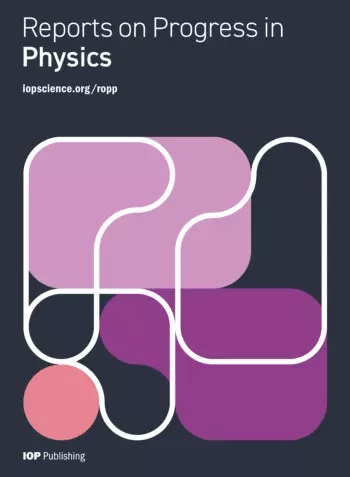Magnon damping and mode softening in quantum double-exchange ferromagnets.
IF 20.7
1区 物理与天体物理
Q1 PHYSICS, MULTIDISCIPLINARY
引用次数: 0
Abstract
We present a comprehensive analysis of the magnetic excitations and electronic properties of {\it fully quantum} double-exchange ferromagnets, i.e., systems where ferromagnetic ordering emerges from the competition between spin, charge, and orbital degrees of freedom, but without the canonical approximation of using classical localized spins. Specifically, we investigate spin excitations within the Kondo lattice-like model, as well as a two-orbital Hubbard Hamiltonian in proximity to the orbital-selective Mott phase. Computational analysis of the magnon dispersion, damping, and spectral weight within these models reveals unexpected phenomena, such as magnon mode softening and the anomalous decoherence of magnetic excitations as observed in earlier experimental efforts, but explained here without the use of the phononic degrees of freedom. We show that these effects are intrinsically linked to incoherent spectral features near the Fermi level, which arise due to the quantum nature of the local (on-site) triplets. This incoherent spectrum leads to a Stoner-like continuum on which spin excitations scatter, governing magnon lifetime and strongly influencing the dynamical spin structure factor. Our study explores the transition from coherent to incoherent magnon spectra by varying the electron density. Furthermore, we demonstrate that the magnitude of the localized spin mitigates decoherence by suppressing the incoherent spectral contributions near the Fermi level. We also discuss the effective $J_1$-$J_2$ spin Hamiltonian, which can accurately describe the large doping region characterized by the magnon-mode softening. Finally, we show that this behavior is also present in multiorbital models with partially filled orbitals, namely, in systems without localized spin moments, provided that the model is in a strong coupling regime. Our results potentially have far-reaching implications for understanding ferromagnetic ordering in various multi-band systems. These findings establish a previously unknown direct connection between the electronic correlations of those materials and spin excitations.量子双交换铁磁体中的磁振子阻尼和模式软化。
我们全面分析了{\it全量子}双交换铁磁体的磁激发和电子特性,即,铁磁有序来自自旋、电荷和轨道自由度之间的竞争,但没有使用经典局域自旋的规范近似的系统。具体来说,我们研究了Kondo晶格模型中的自旋激发,以及轨道选择性Mott相附近的双轨道哈伯德哈密顿量。对这些模型中的磁振子色散、阻尼和谱权的计算分析揭示了意想不到的现象,如在早期实验中观察到的磁振子模式软化和磁激励的反常退相干,但在这里没有使用声子自由度进行解释。我们表明,这些效应与费米能级附近的非相干光谱特征有着内在的联系,这是由于局部(现场)三重态的量子性质引起的。这种非相干谱导致了一个类似斯通纳的连续体,在这个连续体上,自旋激发散射,控制着磁振子寿命,并强烈地影响着动态自旋结构因子。我们的研究探讨了通过改变电子密度从相干到非相干磁振子谱的转变。此外,我们证明了局域自旋的大小通过抑制费米能级附近的非相干谱贡献来减轻退相干。我们还讨论了有效的$J_1$-$J_2$自旋哈密顿量,它可以准确地描述以磁振子模式软化为特征的大掺杂区域。最后,我们证明了这种行为也存在于轨道部分填充的多轨道模型中,即在没有局域自旋矩的系统中,只要模型处于强耦合状态。我们的结果可能对理解各种多波段系统中的铁磁有序具有深远的意义。这些发现在这些材料的电子相关性和自旋激发之间建立了一个以前未知的直接联系。
本文章由计算机程序翻译,如有差异,请以英文原文为准。
求助全文
约1分钟内获得全文
求助全文
来源期刊

Reports on Progress in Physics
物理-物理:综合
CiteScore
31.90
自引率
0.00%
发文量
45
审稿时长
6-12 weeks
期刊介绍:
Reports on Progress in Physics is a highly selective journal with a mission to publish ground-breaking new research and authoritative invited reviews of the highest quality and significance across all areas of physics and related areas. Articles must be essential reading for specialists, and likely to be of broader multidisciplinary interest with the expectation for long-term scientific impact and influence on the current state and/or future direction of a field.
 求助内容:
求助内容: 应助结果提醒方式:
应助结果提醒方式:


